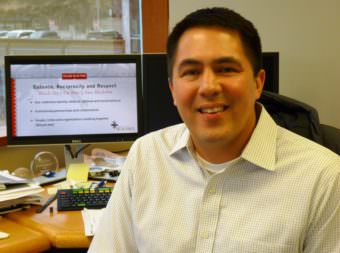
Lower North Slope oil prices are taking a bite out of Native corporation dividends 1,100 miles away.
Sealaska, Southeast’s regional corporation, just announced it will pay out $10.6 million to its more than 22,000 members mid-month. That’s a third less than last year’s spring distribution.
Sealaska President and CEO Anthony Mallott said it’s dropped because of lower payouts from a pool of natural-resource earnings from all regional Native corporations.
“Arctic Slope Regional Corp. is seeing declining oil royalties from the fields that are on their lands,” Mallott said. “And that offers direct 7(i) (payments) to Sealaska and all of the other regionals.”
7(i) is a provision of the Alaska Native Claims Settlement Act describing how corporations are to share resource revenues. The settlement act created the corporations.
This month’s Sealaska payments will range from $133 to $609 per 100 shares, depending on membership in other Native corporations and other factors.
Resource revenue pool payments are the difference between the two amounts.
Mallott said the second-largest dividend revenue source is one of Sealaska’s investment accounts.
“The Permanent Fund distribution is very stable,” Mallott said. “It offers close to $4 million annually in distributions.”
The other source is the corporation’s own business earnings, which have been down. They dropped significantly in 2013 after its construction subsidiary lost more than $25 million.
Mallott said Sealaska’s annual report, due out in May, will include an operational loss. That’s in part because the corporation averages such revenues over five years.
“As we move out of that effect, as we move into 2018, we fully expect the distribution to have a good upward trajectory,” Mallott said.
Sealaska has six different classes of shareholders, receiving different payments.

Class B also covers those enrolled in an urban corporation, such as Juneau’s Goldbelt. They receive the full $609 per 100 shares, including the resource pool money.
Class A also is those enrolled in a village corporation, such as Kake Tribal. They don’t get the resource pool payment, so their total is only $133 per hundred shares. Sealaska pays the difference directly to the village corporations, which may or may not pass it on to shareholders.
Class C is at-large shareholders, who are not enrolled in another corporation. They get the full amount.
Mallott said about a quarter of shareholders are in village corporations and about three-quarters are with urban corporations, or none at all.
Class D is descendants of original shareholders, who receive the smaller payment, as do those who became shareholders after the original enrollment date in class L.
Also, Class E elders can receive an additional $133.
Many shareholders hold more than one class of stock, due to inheritance or gifting.
Ed Schoenfeld is Regional News Director for CoastAlaska, a consortium of public radio stations in Ketchikan, Juneau, Sitka, Petersburg and Wrangell.
He primarily covers Southeast Alaska regional topics, including the state ferry system, transboundary mining, the Tongass National Forest and Native corporations and issues.
He has also worked as a manager, editor and reporter for the Juneau Empire newspaper and Juneau public radio station KTOO. He’s also reported for commercial station KINY in Juneau and public stations KPFA in Berkley, WYSO in Yellow Springs, Ohio, and WUHY in Philadelphia. He’s lived in Alaska since 1979 and is a contributor to Alaska Public Radio Network newscasts, the Northwest (Public Radio) News Network and National Native News. He is a board member of the Alaska Press Club. Originally from Cleveland, Ohio, he lives in Douglas.




